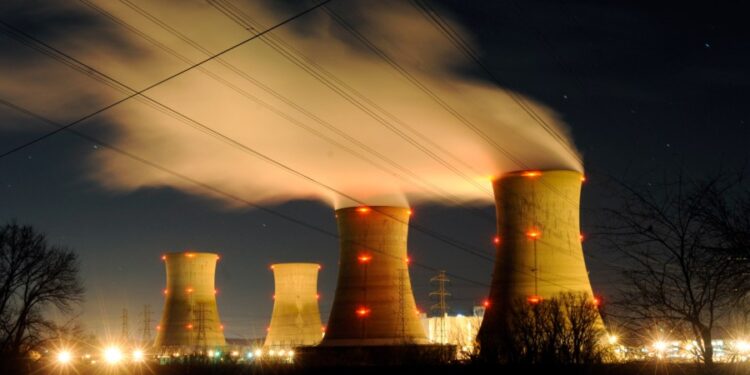
The recent news that Microsoft has made a deal to restart the Three Mile Island Nuclear Power Plant to run its AI data centers brings together two technologies that have each been described as having the potential for a “nuclear-level catastrophe.”
Putting aside whether AI is mature enough to be feeding it with astronomical amounts of our energy supplies, powering it with renewable energy is critical for our energy future and safety.
Mark Jacobson, director of Stanford’s atmosphere and energy program, finds that “Every dollar spent on nuclear is one less dollar spent on clean renewable energy and one more dollar spent on making the world a comparatively dirtier and more dangerous place, because nuclear power and nuclear weapons go hand in hand.”
It is a fallacy to think that nuclear power is reasonable when compared with renewable energy sources. In fact, nuclear energy and its carcinogenic radioactive waste is the most dangerous and fiscally risky energy option.
The deal that Gov. Gavin Newsom and California State Legislature struck with Pacific Gas and Electric to extend the life of its last nuclear plant, the Diablo Nuclear Power Plant, will saddle California ratepayers with some of the highest electricity rates in the nation for years to come. Yet such rate increases are unnecessary thanks to the state’s rapid transition to renewable energy and an estimated 13,391 MW of battery storage — well above the 2,200 MW produced by Diablo Canyon’s reactors.
Now is the time to be clear-eyed and double down on renewable energy. With the energy demands of AI increasing, other states are considering following the same expensive and dangerous path as Pennsylvania’s Three Mile Island Nuclear Power Plant, the site of the country’s worst commercial nuclear accident. Even with Microsoft’s investment, the deal is reliant on massive government subsidies. Without those government handouts, powering AI data centers with nuclear power doesn’t pencil out.
Nuclear plants cost billions of dollars to build and billions of dollars to upgrade. That’s why the nuclear industry depends on tax dollars, tax credits (like Three Mile Island), and ratepayers to pay higher electricity bills.
That same transfer of costs onto the backs of the public occurs if there’s a nuclear accident. A “nuclear-level catastrophe” at a nuclear power plant would leave the public with uninsurable property loss, astronomical clean-up costs and, more importantly, the very real human costs — particularly to young children, who are most vulnerable to radiation. The lack of any solution for nuclear waste disposal further extends the risk of radiation exposure out tens of thousands of years into the future.
When the safety of nuclear plants becomes questionable, like at Diablo Canyon (unknowingly built along active earthquake faults) and with Fukushima, Three Mile Island, Chernobyl and the Santa Susana Field Lab all happening in our lifetimes, it becomes abundantly clear that nuclear accidents happen. The fallout isn’t worth the risk.
Big tech needs to find more energy-efficient ways to run AI data centers, and direct its major energy investments, along with the government, to clean renewable energy that doesn’t make our world dirtier and more dangerous.
Linda Parks is on the board of Mothers for Peace, an organization committed to the decommissioning of the Diablo Nuclear Power Plant. She is executive director of Save Open-space and Agricultural Resources in Ventura County and is on the board of the Environmental Defense Center. She served on the Ventura County Board of Supervisors from 2003-2022 and was a mayor and councilmember of Thousand Oaks. While a supervisor, she chaired the Ventura County Regional Energy Alliance and was a founding member and vice chair of the Clean Power Alliance.







